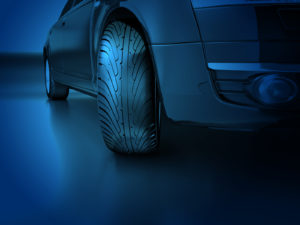New Tire Technologies You Must Know About In 2020
June 16th, 2020 by Fix Auto USA

Tires do not have the best reputation. Fat and rubbery, they puncture easily, lose pressure, are prone to blow-outs, and skid on ice.
But now, new tire technology is transforming the tiresome tire into an intelligent tire. The tire of the future will be able to “talk” to drivers and fix their own flat tires. It will be eco-friendly, safer, and more durable.
And while these advancements in new tire technology may not be available for the mass market for some time, their impact is already being felt today. Here are some examples of new tire technology that you need to know about in 2020:
1. Run flat tyre technology
There’s nothing quite as frustrating and stressful as getting a flat tire, and then having to pull over and fix it yourself.
Enter run flat tyre technology, which allows you to continue driving your car at moderate speed — usually up to 50 miles — even with a tear or hole in your tire. The key to run flat tyre technology is the tire’s extremely strong sidewalls. The extra strength gives you enough time to take your car to an auto shop to have your tire fixed, or to find a safe location where you can change it yourself.
Run-flat tyres are not new (they first appeared around 1985), but now they are growing in popularity. Some automakers are responding to the demand by making them standard in new cars.
2. Self-sealing tires
An even bigger evolutionary leap is self-sealing tires. After a tire is punctured, a liquid automatically squirts onto the tire and seals the hole.
Brands offering self-sealing tires include Bridgestone, Pirelli, and Michelin, which is making them a factory option on the 2020 Ford Explorer.
3. Contact area information sensing
In development since 2011 in Japan, Europe, and the U.S., the Contact Area Information Sensing system includes a sensor on the tire’s internal wall that monitors its interaction with the road surface. It promotes driver safety by informing the driver of changing road surface conditions.
For example, Bridgestone’s Contact Area Information Sensing system checks various road conditions and transmits real-time information – air pressure, tread wear and road conditions – to the driver, who is now more akin to a pilot. The driver can be warned to make corrections like adjusting engine speed and traction control. The information is sent wirelessly to the CAIS central module (a digital screen) that’s housed inside the car.
The National Highway Traffic Safety Administration already requires monitoring systems that warn drivers when a tire loses pressure. All contemporary cars have a Tire Pressure Monitoring System (LINK TO BLOG), whereby a car’s computer system automatically turns on a light when the air pressure in your tires deviates from the normal range.
But the next step in new tire technology is for tires to signal to the driver when they encounter a pothole, gravel, or ice. The advanced warning enables the driver to apply the brakes and monitor the situation. This new tire technology will also be a key component in the development of autonomous vehicles.
4. Airless tires
The first pneumatic, or air-filled tire, was developed almost 125 years ago. Since then, car manufacturers’ research and development teams have been working “tirelessly” to prevent flat tires and blowouts.
In recent years, new tire technology has made incredible advancements and is now paving the way for airless tires. Imagine not having to worry about refilling your tires or the possibility of a nail puncturing them. Also, consider how it can decrease the negative impact on the environment.
We’re closer than you may realize. In fact, Bridgestone has already announced plans to be the first tire brand to provide airless tires for commercial vehicles. Although the company is not ready to launch them to the mass market, Bridgestone did showcase them at the Computer Electronics Show in Las Vegas earlier this year, and it will provide a sneak preview of airless tires during the 2020 Summer Olympics in Tokyo, where it will have smaller bicycle versions on display.
Michelin is also getting into the act, having showcased a prototype of a tire that doesn’t need to be inflated at all recently. It hopes to start producing airless tires, in conjunction with General Motors, by 2024.
5. Replacing rubber
According to the U.S. Tire Manufacturers Association, there were roughly 60 million tires in stockpiles across the country. Michelin is committed to replacing 80 percent of the rubber it uses with more environmentally friendly materials, and other tire companies are following suit.
One solution is the dandelion. That’s right, researchers at Continental believe that the material they use to manufacture tires in the future – maybe five or ten years out – will come from ordinary plants and weeds.
Researchers have identified more than 1,000 plants that could serve this purpose, but the dandelion is top on their list, because it grows so fast. Who knew that new tire technology could be organic!
6. Quiet tires
Bridgestone has recently launched a new tire technology called QuietTrack, which combines innovative rubber compounds with a new tread design. As the name suggests, it is intended to reduce road noise and provide a more pleasurable ride for the driver.
All these advancements in new tire technology are exciting. The ability of intelligent tires to communicate with vehicle systems and drivers will continue to grow, and most drivers will feel safer knowing they can count on an extra pair of eyes and ears.
This blog post was contributed by Fix Auto Burligame a leading industry expert and collision repair shop servicing the San Francisco and Silicon Valley area.
Welcome to
Fix Auto USA
We are the premier independent body shop network delivering world-class customer service and high-quality collision repairs across the U.S.
Learn About Us





